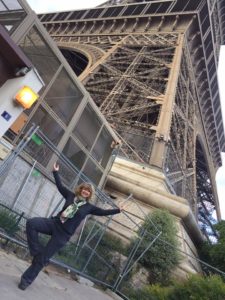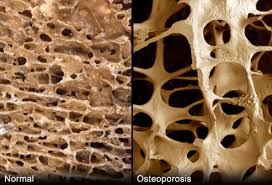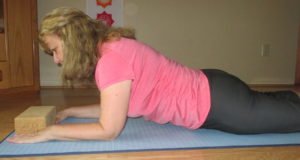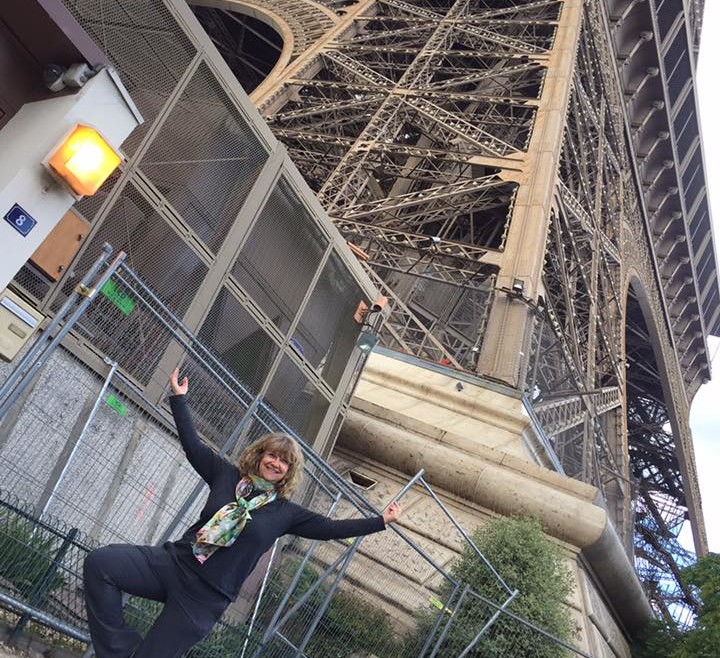-Revised 8/2023
Have you or a friend been diagnosed with osteoporosis or “osteopenia”?
If so, you have plenty of company. The startling facts:
- approximately 10 million Americans have been diagnosed with osteoporosis
- another 44 million have low bone density, placing them at increased risk of developing osteoporosis
- One in two women and up to one in four men will break a bone in their lifetime due to osteoporosis
- For women, the incidence is greater than that of heart attack, stroke and breast cancer combined.
-Source: Bone Health and Osteoporosis Foundation (BHOF)
I have a special interest in this topic because I have osteoporosis in my spine. So do many of my students. I weight train twice per week, and I regularly practice yoga strengthening and balancing. I want my students and myself to get strong and prevent breaks and falls!

My classes and workshops focus on these practices (and more) created from years as a college faculty member and yoga teacher. I also have specialty certifications as a Bone Fit Professional(c) through BHOF, a Senior Fitness Specialist through NASM, “Yoga for Healthy Aging” teacher, and participation in web seminars, reading, and study of yoga for osteoporosis.
Frankly, osteoporosis as well as yoga for healthy aging have been my obsessions for countless years.
So I share my experience, about the benefits of starting or adding yoga for your bone strengthening/fall prevention repertoire.
You’re also provided links to some resources to learn more about this condition.
DEXA Surprise
Several years ago I had my bone density measured for the first time. This was the first I learned of the DEXA scan (Dual-energy X-ray absorptiometry). My insurance covered the costs.
My previous impressions about osteoporosis?
This is a disease suffered by very, VERY old and frail people.
Imagine my shock that my scores on the DEXA screening indicated osteoporosis in the lumbar spine and “osteopenia” in the hip.
At my follow-up visit, my health care provider seriously and earnestly showed me a drug company sponsored plastic model of healthy and strong bone. Along side of it: a model of a weak, thin osteoporitic bone.

The scare tactic implication was: if I didn’t immediately comply and take the drug, my bones would become brittle, thin, and I’d crumble like a tortilla chip.
This provider wrote me a prescription for Fosamax. I dutifully filled it. Then, because like many of you I am nosey and curious, I researched the drug and side-effects.
And made the personal decision to not follow the prescribed drug protocol.
As of this writing, I still haven’t changed my mind about my decision (more about why later in this article.) I urge you to fill any prescriptions with an eyes wide open approach, weighing risks and benefits. Obviously, every person is different and you will find a great deal of information on “Dr. Internet”.
But PLEASE look at the sources such as the drug manufacturer’s website and make your choices critically before you decide on treatment. Discuss what is best for your particular case with health care and related experts such as nutritionists and endocrinologists knowledgeable about osteoporosis.
Yoga for Osteoporosis
In my Balance, Bones, and Core classes, instruction efficiently combines:
-safe and satisfying variations of poses to move into without fear particularly in rotational and forward folding.
-physical poses that are safely guided that can strengthen the spine, legs, core muscles, and hips.
-balancing practices from yoga and other movement modalities that can create confidence and prevent falls.
-resistance band work for added challenge
-holistic yoga practices including breath work, postural improvement, and meditative practices
Variety and Novelty
Because our bodies adapt to doing the same actions repeatedly, it is important to also keep elements of variety and novelty to our movement programs in order for strengthening to occur. In that way, not only do our muscles and bones remain stimulated, but so do our brains.
As I am somewhat of a variety junkie, I am a proponent of adding appropriate yoga to your repertoire of bone building, or starting yoga with a suitable class.

Ultimately, I adapted my personal yogasana (physical) practice to my diagnosis. For the students in my Balance, Bones and Core classes, I’ve done the same and added further yoga practices such as safe impact, balance practice, core strength, restorative yoga for stress, meditation, and breath work.
And there’s more…
Twice a week I weight train at home. Resistance training is key to healthy aging, from working with bodyweight (such as in yoga), to resistance bands, to other external resistance tools like dumbbells, barbells etc.
Important Further Reading
Check out this must-read NPR story “How a Bone Disease Grew to Fit the Prescription” to learn how the history of the connections between drug companies, DEXA manufacturers, and Medicare reimbursement has contributed to the recent prevalence of bone density screening.
Women’s Health Network: Osteoporosis Fact Sheet . Eye opening.
About Osteoporosis Drugs
The American College of Physicians (ACP) has issued guidelines for bisphosphonates. From the press release:
“Physicians should prescribe generic drugs to treat patients with osteoporosis whenever possible and they should discuss the importance of medication adherence, especially for bisphosphonates,” said Jack Ende, MD, MACP, president, ACP.
For this post, I asked Dr. Loren Fishman, co-author of “Yoga for Osteoporosis” for his reaction to the ACP guidelines.Thank you Dr. Fishman and to Carol Ardman for allowing me to share your response.
Bold added for emphasis.
“The ACP guidelines for treatment of osteoporosis are, in my view. clear, straightforward and, so far as they go, accurate. However relevantconsiderations have been omitted:
The chief negative consequence of osteoporosis – fracture –
requires either poor posture (spine) or a fall (hip, femur or spine).
Although the medications do little for either posture or balance, yoga
improves posture and balance, and additionally extends range of motion,
raises strength, refines coordination, and lowers anxiety, all known
contributors to poor posture, and falls.
The ACP defines osteoporosis as “a systemic skeletal disease
characterized by decreasing bone mass and microarchitectural deterioration
[bone quality] of bone tissue that leads to an increased risk for bone
fragility and fracture.” It also states that “Dual-energy x-ray
absorptiometry (DEXA) is the current gold standard test for diagnosing
osteoporosis in people without an osteoporotic fracture.”
Yet the DEXA scan records only bone mineral density, and sheds no light on
microarchitectural structure at all. Indeed the DEXA is the accepted gold
standard, but since an estimated 30% – 70% of any bone’s strength
(resistance to fracture) is said to be in the bone microearchitecture, and
not the cortical portion of the bone which the DEXA reports), the ACP
might do well to recommend inclusion of bone quality measures in a more
clinically meaningful measure of osteoporosis, even though no such measure
is standardized at this time.
More Recommendations:
Yoga reinforces safe alignment in everyday activities, manage stress and anxiety, and supports balance throughout your day.
I regularly have my vitamin D3 levels monitored, and I suggest you do so as well.
My book Yoga for Holistic Healing: Poses and Sequences for Pain and Stress Relief includes clear illustrations and instructions for practices and poses that are osteoporosis (and other conditions!) informed.

